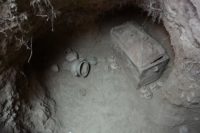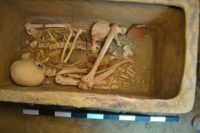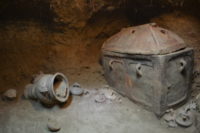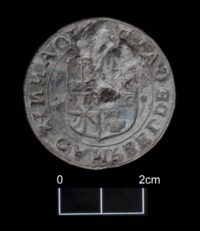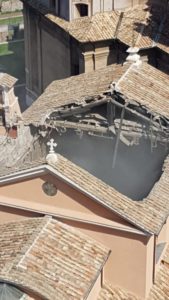 The roof of the church of San Giuseppe dei Falegnami (Saint Joseph of the Carpenters) collapsed on Thursday afternoon, reducing to rubble one of the most beautiful original parts of the church: the wooden coffered ceiling built in the 1600s. It was the central vault which weakened and took the roof down.
The roof of the church of San Giuseppe dei Falegnami (Saint Joseph of the Carpenters) collapsed on Thursday afternoon, reducing to rubble one of the most beautiful original parts of the church: the wooden coffered ceiling built in the 1600s. It was the central vault which weakened and took the roof down.
San Giuseppe was built by the guild of carpenters starting in 1597. It was completed in 1663. The facade and apse were redone in an extensive 1886 renovation. Today the church suffers from structural issues (to state the obvious) and is mostly closed to the public during regular hours.
The church was built over another church, San Pietro in Carcere, which in turn was built over (and named after) the Mamertine Prison. Known in antiquity as the Tullianum, it is one of Rome’s most ancient prisons. Legend has it that it was built by the fourth king of Rome, Ancus Marcius, in the 7th century B.C.; its factual history can be traced back to the later Republican era when a variety of rebels, pretenders, usurpers and individuals deemed enemies of the Senate and the People of Rome were imprisoned there. Gallic leader Vercingetorix withered away to nothing in the Tullianum before being executed at Julius Caesar’s triumph. Jugurtha, King of Numidia, starved to death in that dank hole. Both Saint Peter and Saint Paul did bids there before their martyrdoms.
 Located steps from the Capitoline overlooking some of Rome’s most iconic ancient marvels, the church makes an evocative setting for photographs and is an extremely popular wedding venue today, structural problems notwithstanding. Two were scheduled for this weekend, in fact. The timing of the roof collapse is therefore as fortunate as a tragedy can be. Only the priest was on site at the time, and he was taking siesta in his quarters so wasn’t in the church itself.
Located steps from the Capitoline overlooking some of Rome’s most iconic ancient marvels, the church makes an evocative setting for photographs and is an extremely popular wedding venue today, structural problems notwithstanding. Two were scheduled for this weekend, in fact. The timing of the roof collapse is therefore as fortunate as a tragedy can be. Only the priest was on site at the time, and he was taking siesta in his quarters so wasn’t in the church itself.
First responders arrived immediately after the collapse, alerted by the enormous boom and the column of smoke. Staff and visitors to the Mamertine were briskly removed and there were no injuries. The firefighters’ preliminary estimates are that three quarters of the roof came down in the collapse and they have a crane up right now taking down the remnants that are in imminent danger of falling. Basically, by the time the situation is stabilized, there isn’t going to be a roof to speak of.
The damage to the interior of the church is impossible to assess right now. It’s engulfed in massive broken beams and debris. No damage to San Pietro in Carcere or to the ancient Mamertine underground is known, but there has been a report of damage to a chapel adjacent to the prison.
Here’s an aerial view of the giant hole in the church roof:

